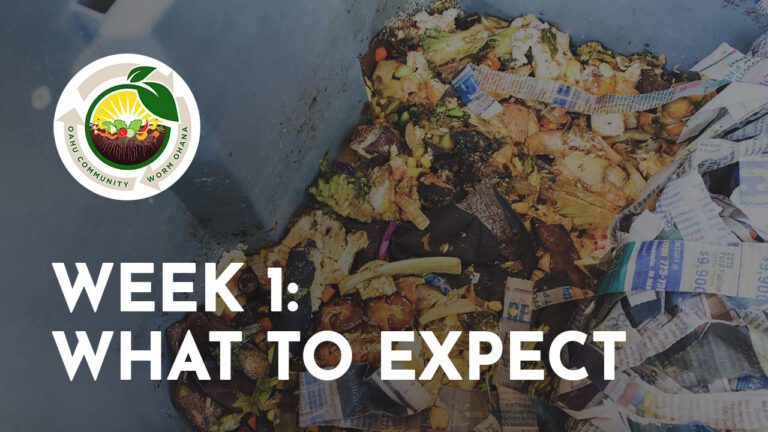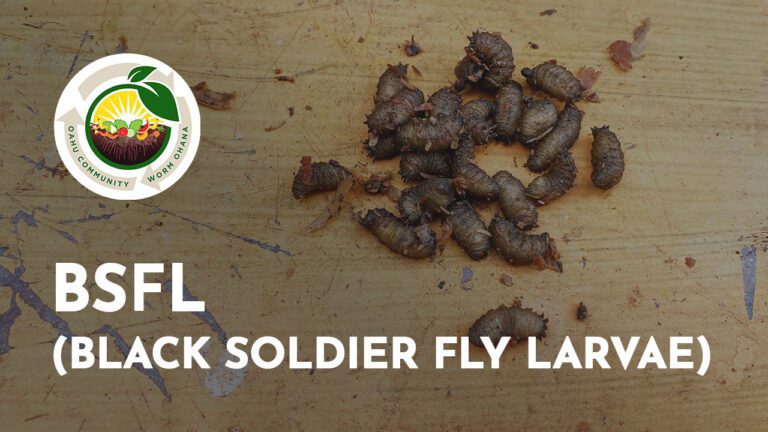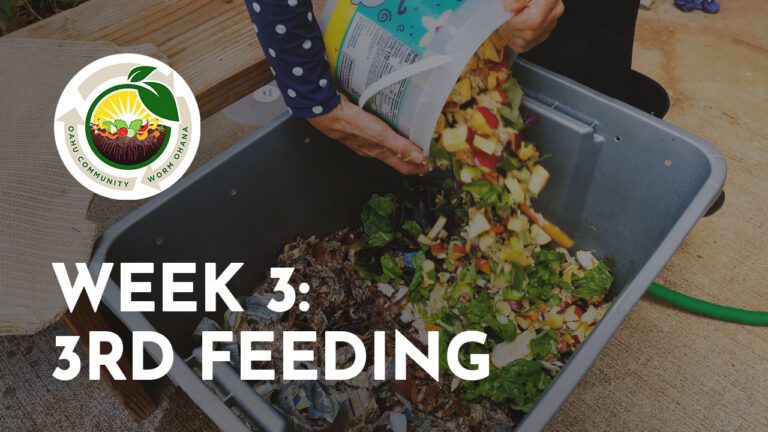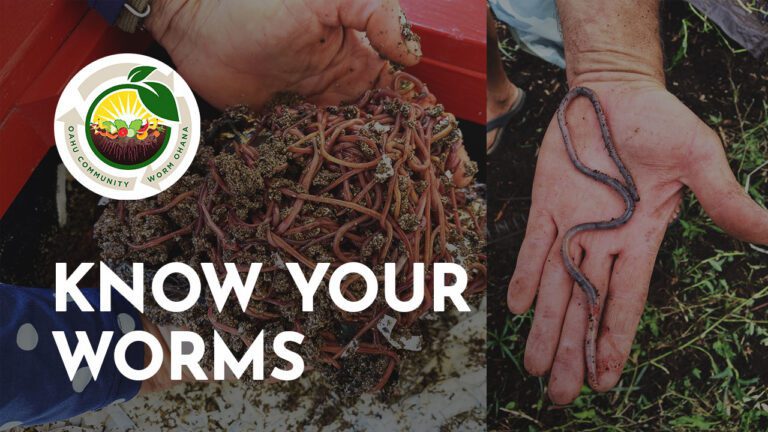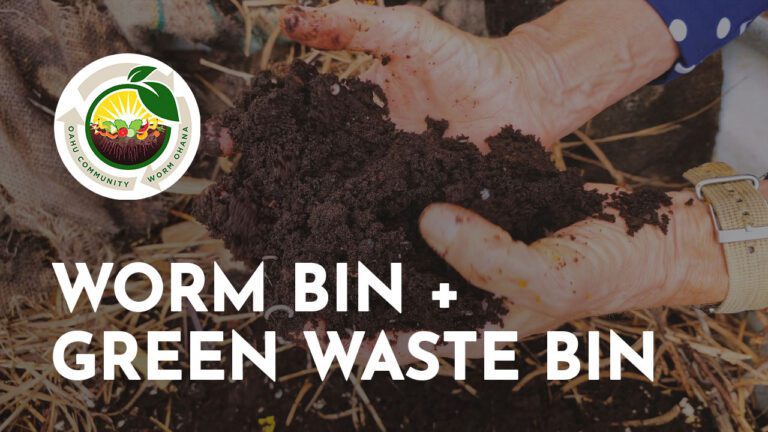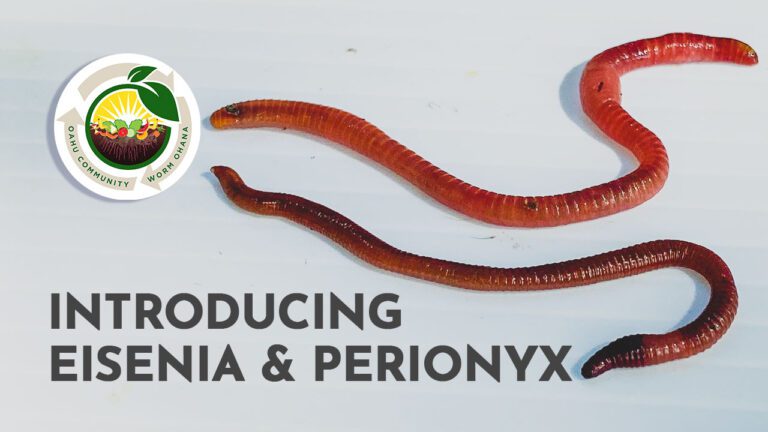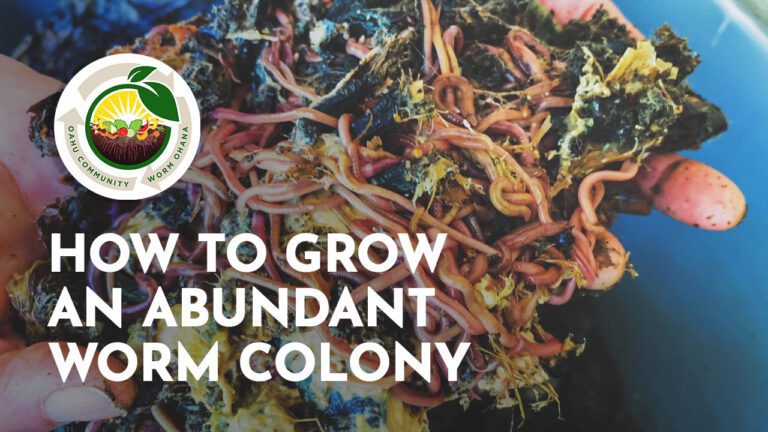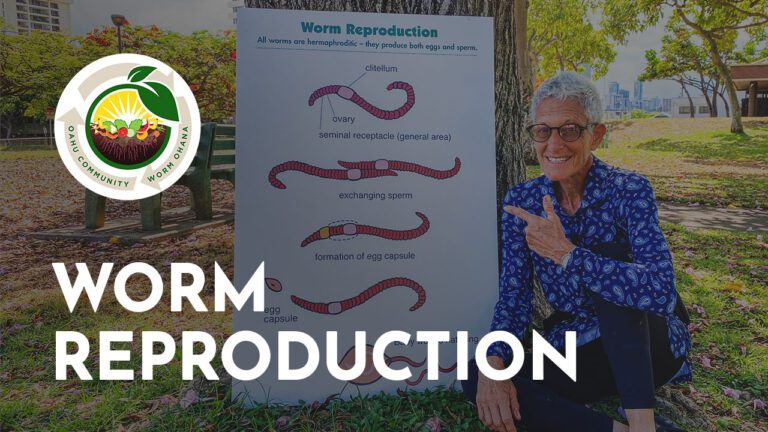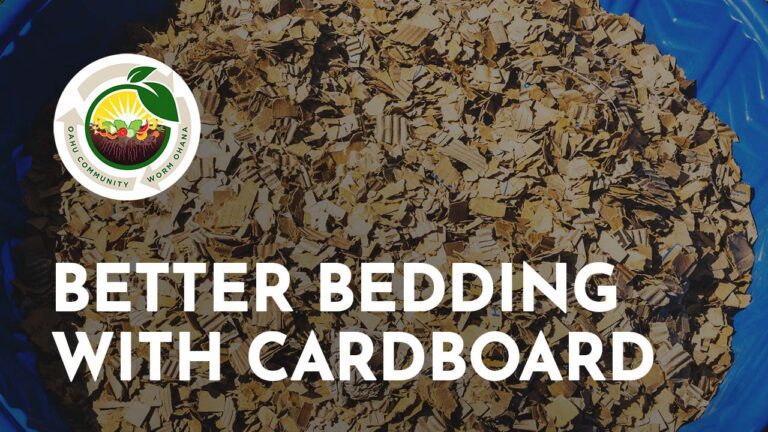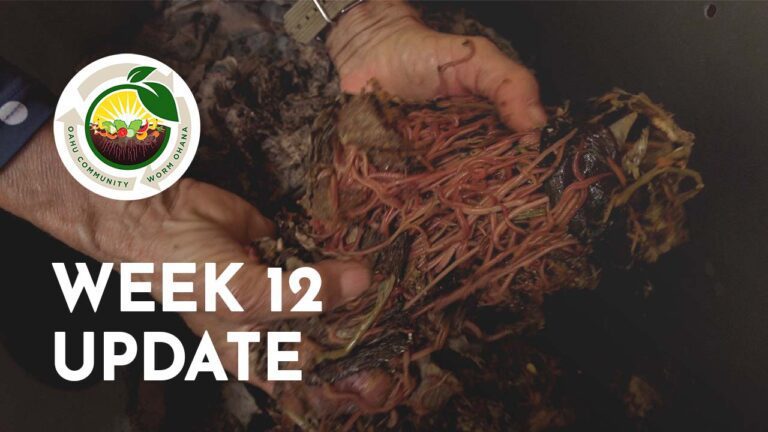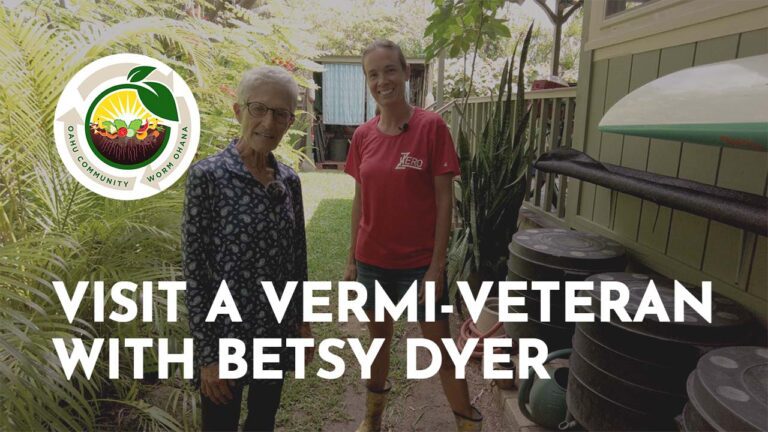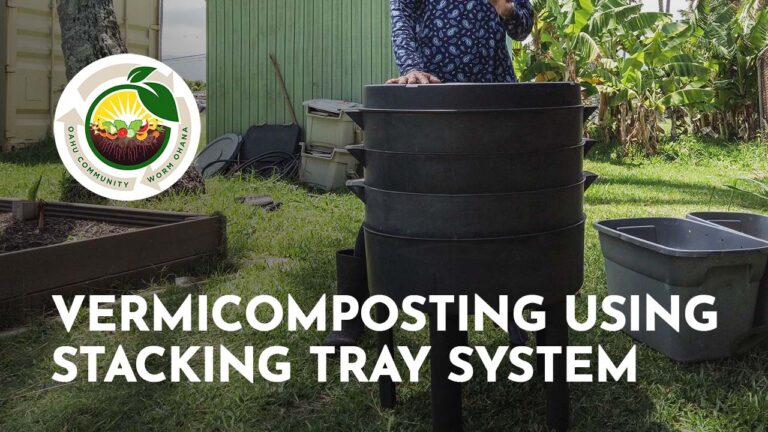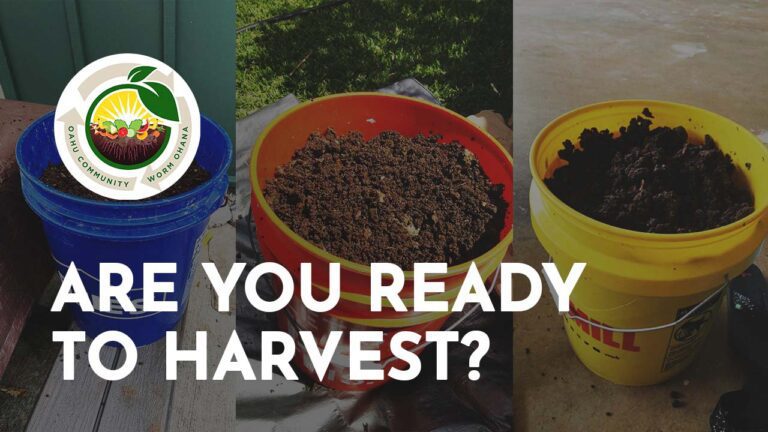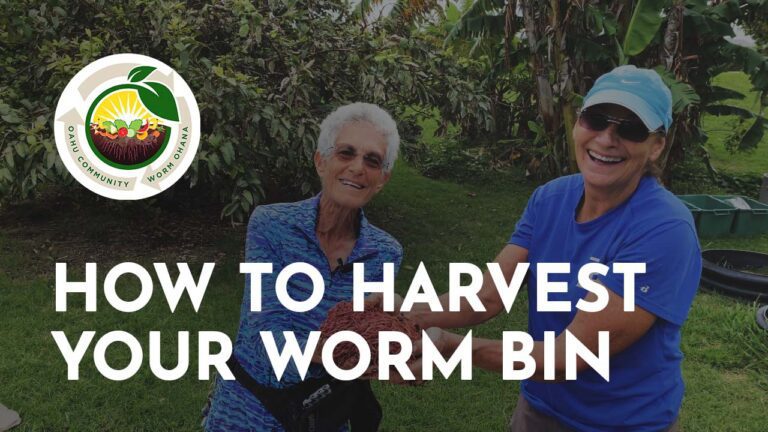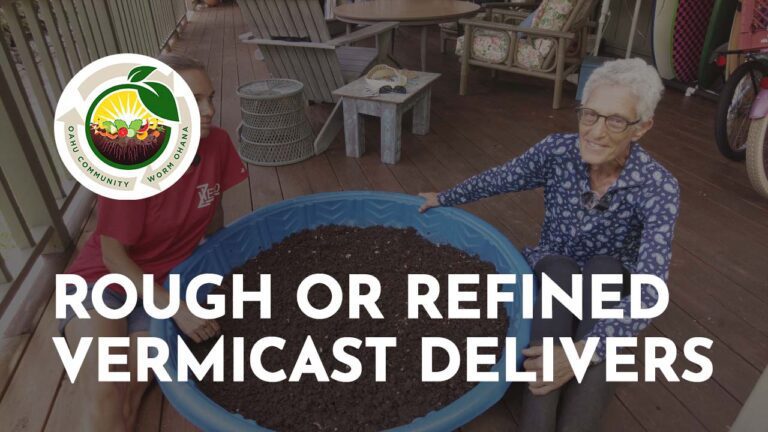VERMIVENTURE
Welcome to the Worm Ohana video library, where we guide you in your vermicomposting journey, starting from worm bin set up to vermicast harvest and use.
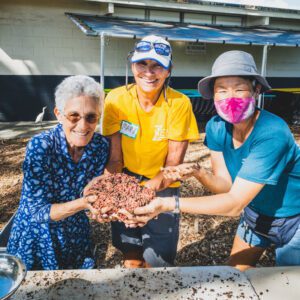
-
First Week: What to Expect
The early stage of vermicomposting is the time for the ecosystem in your bin to get established. Worm activity is minimal at this point in time.
-
Second Week: 2nd Feeding
We can’t see the wormies, but we can tell that they are active because the food waste we gave them on the first feeding has partly disappeared! Now we feed…
-
BSFL (Black Soldier Fly Larvae)
Love them or hate them, you will eventually find BSFL or black soldier fly larvae in your worm bin. Despite their gross and icky reputation, these grubs have potential benefits…
-
Third Week: 3rd Feeding
Our second feeding had very dense food like raw eggplant and carrots. As expected, they are still decomposing, and the worms have not quite touched them. However, when we look…
-
Know Your Worms
Most of us are familiar with the earthworms. However, the worms in our vermicomposting bins are not of the same type. Composting worms do not belong in the garden. They…
-
Worm Bin + Green Waste Bin
Now that you have been vermicomposting for a few weeks, you know that you can’t feed everything to your worms. If you have a yard, please consider composting your green…
-
Introducing Eisenia & Perionyx, Your Composting Worms
Out of thousands of terrestrial worm species today, the two that do the work in our composting bins are Eisenia fetida and Perionyx excavatus. These worms live in dense colonies…
-
How To Grow An Abundant Worm Colony
It’s no secret that the best way to grow your worm colony is by feeding them. Watch the video for details as Mindy shows you what a robust bin looks…
-
Worm Reproduction
Curious about how worms make babies? Mindy explains the mechanics behind worm reproduction.
-
Better Bedding With Cardboard
Recycle and repurpose cardboard boxes into worm bin bedding. Watch the video for step-by-step instructions on how to prepare and tear up cardboard boxes to be used as bedding.
-
Week 12 Update
The worm bin ecosystem takes about three months to get established. Watch the video to see what a developed worm colony looks like.
-
Visit a Vermi-Veteran With Betsy Dyer
The Worm Ohana visited one of our veteran vermicomposter, Betsy Dyer, who uses a stacking tray system as well as the lateral flow system. Watch the video to see her…
-
Vermicomposting Using Stacking Tray System
Do you have a stacking tray system aka “Can-o-Worms” but can’t seem to work it properly? Watch the video to find out how Mindy operates a stacking tray system to…
-
Are You Ready To Harvest?
Do you think your vermicast is ready to harvest? Watch the video to find out how Mindy digs in the worm bin to determine how much cast has been produced…
-
How to Harvest Your Worm Bin
And once you determine that you are ready to harvest your worm bin, watch the video below to see how harvesting is done.
-
Rough or Refined, Vermicast Delivers
What do you do with the vermicast after you harvest your worm bin? In this video Mindy gives practical advise on how to handle vermicast once you have some available.

